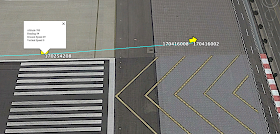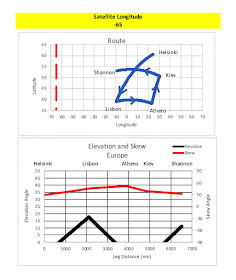Runway factors change the normal stopping distance of a Boeing 737-700.
- A 10 knot tailwind adds about 21% to the stopping distance
- A wet runway adds about 15% to the stopping distance
- Standing water can more than double stopping distance.
Southwest WN278 overran the KBUR (Bob Hope, Burbank, BUR) runway 08. The Boeing 737-700 rolled into the Engineered Material Arrest System (EMAS) that had been installed as a result of another Southwest 737-300 which overran the same runway in March 2000. This was the second airplane to be fortunate for arrestment by that particular EMAS installation.
Lateral approach path shows a correction right-to-left on short final, which may have led to running off the left side of the runway. The last recorded speed of 49 knots at the runway end, after a normal arrival point, and expected touchdown point (assuming appropriate landing weight), leaves standing water/hydroplaning as the most likely overrun villain. There is no data to confirm the reason for lack of deceleration and control; only data to show it did not (which is evident in its final resting position). The nose-gear entered the EMAS probably traveling between 35 and 40 knots.
Lateral approach path shows a correction right-to-left on short final, which may have led to running off the left side of the runway. The last recorded speed of 49 knots at the runway end, after a normal arrival point, and expected touchdown point (assuming appropriate landing weight), leaves standing water/hydroplaning as the most likely overrun villain. There is no data to confirm the reason for lack of deceleration and control; only data to show it did not (which is evident in its final resting position). The nose-gear entered the EMAS probably traveling between 35 and 40 knots.
Aviation safety initiatives demand improvements to limit recurrence of the same factors that cause an accident or injury. While two Southwest 737s have overrun the same runway, this time EMAS brought the Southwest airliner to a rapid stop without significant injury.













